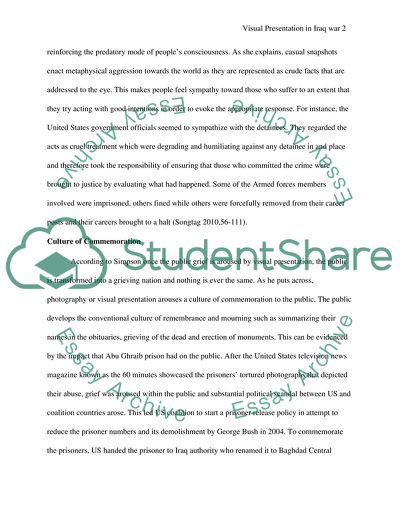Cite this document
(Visual Presentation in Iraq War Coursework Example | Topics and Well Written Essays - 1500 words, n.d.)
Visual Presentation in Iraq War Coursework Example | Topics and Well Written Essays - 1500 words. https://studentshare.org/military/1747987-what-can-be-learned-from-visual-representations-of-the-war-in-iraq-you-may-if-you-wish-focus-your-answer-on-the-abu-ghraib-photographs-and-their-reception
Visual Presentation in Iraq War Coursework Example | Topics and Well Written Essays - 1500 words. https://studentshare.org/military/1747987-what-can-be-learned-from-visual-representations-of-the-war-in-iraq-you-may-if-you-wish-focus-your-answer-on-the-abu-ghraib-photographs-and-their-reception
(Visual Presentation in Iraq War Coursework Example | Topics and Well Written Essays - 1500 Words)
Visual Presentation in Iraq War Coursework Example | Topics and Well Written Essays - 1500 Words. https://studentshare.org/military/1747987-what-can-be-learned-from-visual-representations-of-the-war-in-iraq-you-may-if-you-wish-focus-your-answer-on-the-abu-ghraib-photographs-and-their-reception.
Visual Presentation in Iraq War Coursework Example | Topics and Well Written Essays - 1500 Words. https://studentshare.org/military/1747987-what-can-be-learned-from-visual-representations-of-the-war-in-iraq-you-may-if-you-wish-focus-your-answer-on-the-abu-ghraib-photographs-and-their-reception.
“Visual Presentation in Iraq War Coursework Example | Topics and Well Written Essays - 1500 Words”. https://studentshare.org/military/1747987-what-can-be-learned-from-visual-representations-of-the-war-in-iraq-you-may-if-you-wish-focus-your-answer-on-the-abu-ghraib-photographs-and-their-reception.


